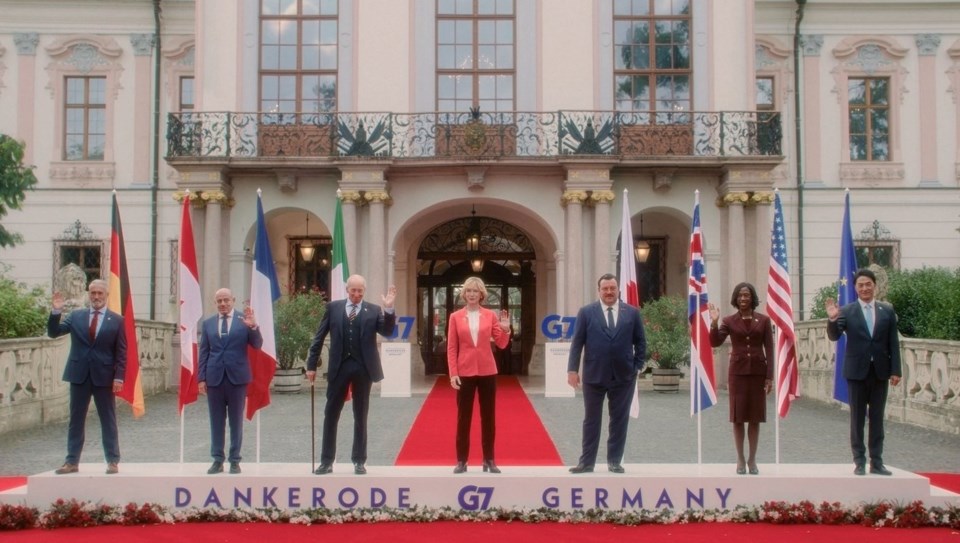TORONTO — Even from her native Australia, Cate Blanchett has long felt a connection to Winnipeg filmmaker Guy Maddin’s quirky, singular films.
The Oscar-winning actress admires the way the Manitoban auteur’s work — from 2007’s docu-fantasy “My Winnipeg” to 2017’s Alfred Hitchcock love letter “The Green Fog” — possesses “a strange universality” despite its idiosyncrasies.
“He can make a film that’s so specifically about Winnipeg and his childhood, and yet I watch it gasping and weeping and not fully comprehending what I'm seeing while on the other side of the world,” Blanchett said during an interview at the Toronto International Film Festival.
“I think that's astonishing. He's been working in this very particular underground way for so long, and if you look at the work of a lot of filmmakers who may not necessarily say they're influenced by Guy, you can see his influence.”
So when their mutual friend Ari Aster, the indie horror master behind “Hereditary” and “Midsommar,” asked Blanchett if she’d like to star in Maddin’s new black comedy “Rumours,” which he produced, she couldn’t pass it up. The film hits theatres Friday.
“It was really wonderful having Cate on board because all of a sudden, casting got a lot easier,” Maddin recalled on a virtual call from Winnipeg.
“Agents didn't just blow our emails off.”
“Rumours,” which Maddin helmed with collaborators Evan and Galen Johnson, follows seven leaders of the world's wealthiest democracies as they gather for the annual G7 summit, hosted by Blanchett's German Chancellor Hilda Ortmann. Tasked with drafting a provisional statement addressing a global crisis, the politicians encounter unexpected hurdles including a bog zombie apocalypse, messy dalliances, and a mysterious giant brain. The film also stars Alicia Vikander as the secretary-general of the European Commission and Roy Dupuis as the Canadian prime minister.
The most obvious point “Rumours” appears to convey is that the planet's most powerful individuals are, in reality, clueless bureaucrats incapable of accomplishing anything.
However, Maddin emphasizes the filmmaking trio was more focused on examining how human desires drive world leaders than on crafting a political satire. He likens the movie to a soap opera.
“The theatre of politics, and the pleasure one gets from it, is not exactly dissimilar from nighttime soaps. There's certainly vilified people on both sides and everything is reduced in the news stream to evilly motivated policies and things like that,” Maddin said.
At the centre of the melodrama is Dupuis’ Prime Minister Maxime Laplace, Canada’s forlorn, man-bunned leader who’s desperate to rekindle his past tryst with British Prime Minister Cardosa Dwindt, played by Nikki Amuka-Bird.
“Canada in the movie is kind of like the teenager. He’s not really taken seriously, but Maxime is very passionate. He likes strong women. He’s also very courageous. He’s into action. He likes to help,” Dupuis said.
“That last part is probably closer to what Canada is. We’re the peacekeepers.”
Yet Laplace’s grand talk of peace often rings hollow. In one scene, while encircled by bog zombies, he delivers a well-spun apology only to then whack them over the head with a shovel to make his escape.
Evan Johnson says the scene is a joke about the hypocrisy of land acknowledgments, and one of the film’s more pointed political statements.
“Some (land acknowledgments) I find profoundly moving and useful, and then other times you just feel like you're watching a major institution with all kinds of share-profit motivation use its audience and use a false claim to Indigenous empathy,” he said.
“It just seemed like a very direct thing a Canadian prime minister would have an instinct for: a false, hollow apology followed by ‘Let's get out of here.’”
Maddin says every time he and the Johnsons found themselves veering too much into obvious social commentary, they would insert “a writerly U-turn” into the script.
“We just didn't want to make a Monday crossword puzzle that could be quickly solved and discarded,” he said.
“We wanted to make an object that's beautiful and has nice sounds and is easy on the eyes and is a bit puzzling, but somehow feels true or familiar in ways you’d never put it yourself as a viewer.”
Nevertheless, Blanchett says the film has an unmistakable message in the way it holds a mirror up to the “absolute absurdity of what we've been left with in terms of global leadership.”
“There are so many crises besetting us — the intersection of climate and human displacement and global warfare; the threat of nuclear weapons; the collapse of Western democracies. I mean, you name it. They're all interlinked,” she said.
“And every year the G7 gathers. And every year we get the same speech. Every year we watch them do these surreal and slightly artificial cultural events. I mean, it felt like we were making a documentary."
This report by The Canadian Press was first published Oct. 16, 2024.
Alex Nino Gheciu, The Canadian Press



